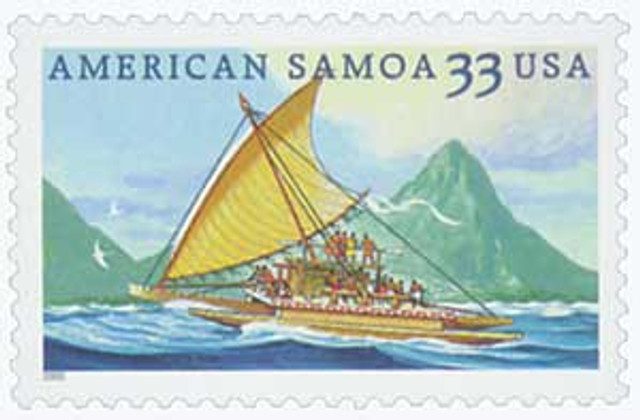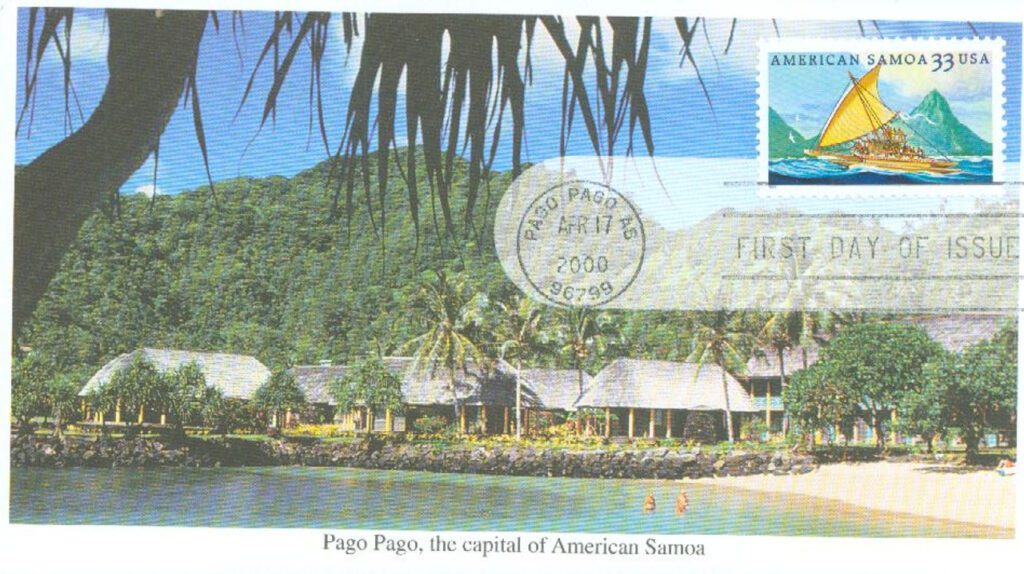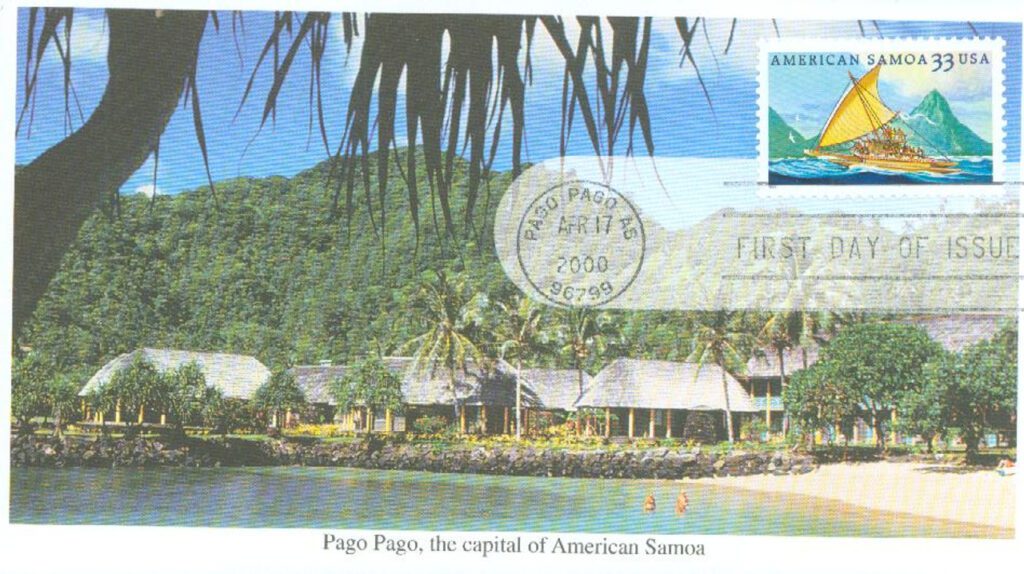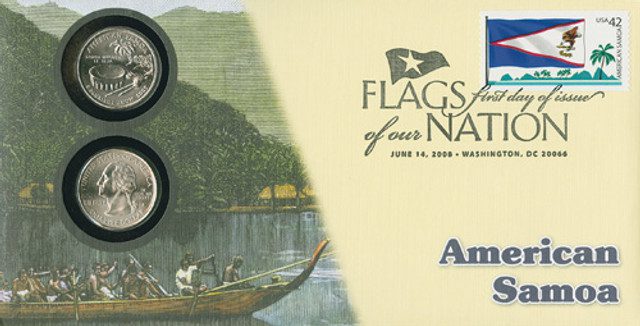On April 17, 1900, chiefs on the island of Tutuila signed the Treaty of Cession of Tutuila, transferring control of American Samoa to the United States. The US Navy governed the island for half a century before it became self-governing, but remains an unincorporated US territory.
American Samoa’s earliest inhabitants arrived at the islands west of Samoa as early as 1500 BC. Samoa’s Manu’a Islands have one of the oldest recorded histories in Polynesia.
Many years later, according to legend, Nafanua, a Samoan warrior goddess, was called upon during a battle between the Tongans and Samoans. When the Tongans realized it was a woman, they ended the war. Nafanua created the Samoan government, headquartered in Savaii. Many credit Nafanua and her descendant Queen Salamasina for creating the islands’ faamatai (local government) and the fa’asamoa (local customs). Nafanua also told the Samoans that sometime in the future, a new government from across the seas would come and that they should support it.
During the early 1830s, John Williams of the Congregationalist London Missionary Society became the first missionary to reach the Samoan Islands. Samoans likely saw his arrival as the fulfillment of Nafanua’s prophecy and adopted Christianity. Williams’s arrival was soon followed by many other missionaries and traders, making Pago Pago one of the largest whaling ports in the entire Pacific Ocean. Destined for China, many of the traders who passed through the islands were so fond of the scenery and climate that they settled there, bringing with them many diseases to which the native Samoans had no immunities.

The Samoans’ first contact with Americans occurred in 1872 when US Navy Commander Richard Meade met with Tutuil’a Island’s Chief Manuma to establish a port in Pago Pago. Around this same time, traders from the United Kingdom and Germany also established trade posts on the islands. Tensions arose between the British, Germans, and Americans, and among their respective allied groups among the Samoans. A conference between the three major powers was held in 1887, though it adjourned without producing any results. In August of 1887, Germany overthrew the then-king of the Samoans, Malietoa Laupepa, forcing him into exile, and declared a new king, Tupua Tamasese. On September 9, Mata’afa Iosefo crowned himself king, and his followers took control from Tamsese’s. The British and American Navies became involved, threatening to fire on the Germans if they attempted to aid Tamasese. Then in 1889, a cyclone hit Apia, Samoa, destroying three German and three American warships, and six merchant ships that had been in the harbor. Only one British warship manage to escape to open waters. Wanting to end the destruction, the 1889 Treaty of Berlin was signed, declaring Samoa a condominium (a political territory where multiple sovereign powers formally share control), and Laupepa was appointed king once more.
Tensions continued between the nations however, particularly following the death of Laupepa in 1898. A council of Samoan chiefa elected Iosefo to become the new king, who now had the backing of Germany. Meanwhile, the British and Americans supported Laupepa’s son Malietoa Tanumafili. The reignited conflict resulted in the 1899 Samoa Tripartite Convention. With representatives from each nation, the joint commission met to divide the islands. Germany received the western islands of Upolu, Savaii, Apolima, and Manono, while the US got control of Tutuila, Rose Island, and Aunu’u. Britain gave up its claims in exchange for Germany giving them their protectorates in the Northern Solomon Islands. On April 17, 1900, the local chiefs gave up their claims to the islands through the Treaty of Cession of Tutuila. The US officially took control of the eastern islands on June 7, 1900. The US Navy then expanded the Pago Pago Bay coaling station into a full naval station for the Pacific Squadron. The islands’ first governors were US Navy officers operating the islands like a military base.
Under American control, Samoan customs remained prevalent. The chiefs were allowed to continue managing political affairs in their traditional form, through the faamatai. It was around this time that these islands began being referred to as American Samoa.
By the time of World War II, American Samoa was an important military base and staging point for the Navy’s offensive strategies in the Pacific. During the war, Samoan men age 14 and older were trained in combat and also served as medical personnel, code personnel, and ship mechanics. When the war was over, the US Department of the Interior created Organic Act 4500 in an attempt to incorporate American Samoa. Samoan chiefs, led by Tuiasosopo Mariota, argued against it and the act was defeated in the US Congress.
Up until 1951, the US Navy ran American Samoa. It was at this time that President Harry Truman officially turned over the responsibility of administering American Samoa to the Department of the Interior, drafting a new constitution in 1960. American Samoa officially became self-governing on July 1, 1967. In 1978, American Samoa was no longer led by a Navy-appointed governor, holding their first election. As a US territory, Samoa elects one non-voting delegate to the US House of Representatives and sends delegates to the Democratic and Republican National Conventions. People born in American Samoa are considered US nationals but aren’t US citizen unless one of their parents is.
| FREE printable This Day in History album pages Download a PDF of today’s article. Get a binder or other supplies to create your This Day in History album. |
Discover what else happened on This Day in History.








IMPERILISM & HUMAN NATURE REIGN AGAIN.
This is amazing the legendary of American Samoa. How we became US Territory. How Samoa history begins. I’m proud to be a Samoan.